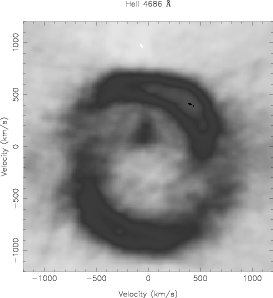Warwick Astronomy PhD Projects
Mapping Gas Flows in Accreting Binary Stars
Interacting binary stars provide spectacular examples of the phenomenon of accretion, a process ubiquitous in astrophysics and necessary to drive star and galaxy formation as well as the formation of super-massive black-holes. In these stars, matter flows from one star, typically fairly normal, to a nearby companion which is a compact object, either a white dwarf, neutron star or black-hole. These systems show violent instabilities within the discs of matter that build up, as well as explosive releases of energy in the accreted material itself owing to thermonuclear runaways. They are also the class of systems that lead to Type Ia supernova explosions, as an accreting white dwarf ignites and explodes. Type Ia supernovae are the "standard candles" used to measure the expansion history of the Universe, and yet we don't know what sort of system they come from. For a number of years I have been working on ``indirect imaging'' of accreting binary stars. This uses spectra to map out the emission regions, using a process entirely analogous to the computerised tomography used in medicine. This allows us to resolve features far below the limits imposed by the Earth's atmosphere and even the diffraction limit on large telescopes. I now wish to take this work further in an attempt to map 3D structures in magnetically-accreting stars and simultaneously to uncover the velocity and spatial structures of accretion discs. This project will be a combination of computer modelling and observation. This project will involve programming; while there is no need for much experience with programming, you should at least know that it is something that you would like to pursue. I expect that development of models will be followed by extensive testing, which will then lead onto observations designed to implement the techniques developed. The project will give the student the competitive advantage of having developed a unique technique which can lead to future collaborations with other researchers. Supervisor: Tom Marsh
The image above is an example of tomographic imaging in practice. This shows an accretion disc in a bright "outburst" state in which it develops strong spiral-shaped asymmetries. These features are driven by tidal forces but their exact nature is controversial. The weak spot of emission located on the Y axis in between the two arms of the spirals comes from the star that is losing the mass that forms the disc. At this stage it is illuminated by X-rays from the inner accretion and responds with the production of the atomic line emission used to derive this image.
Please fill in our PhD enquiries form if you are interested in studying for a PhD in Astronomy at Warwick.
